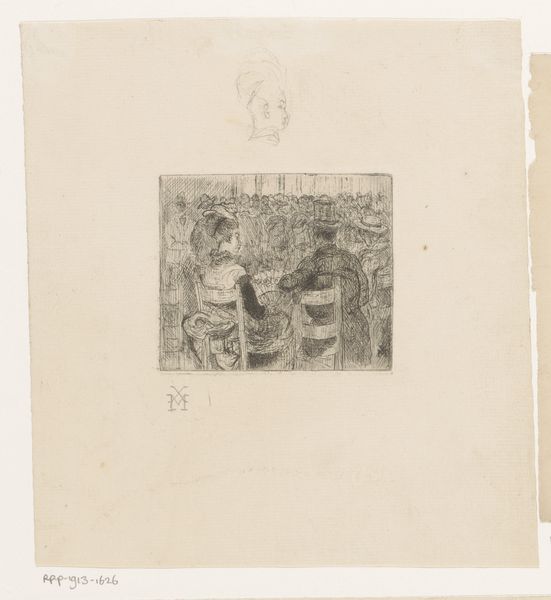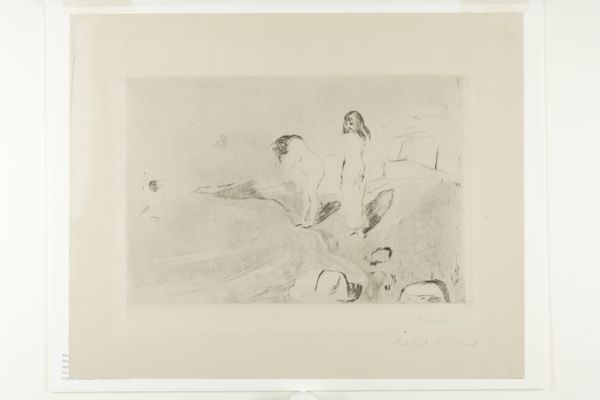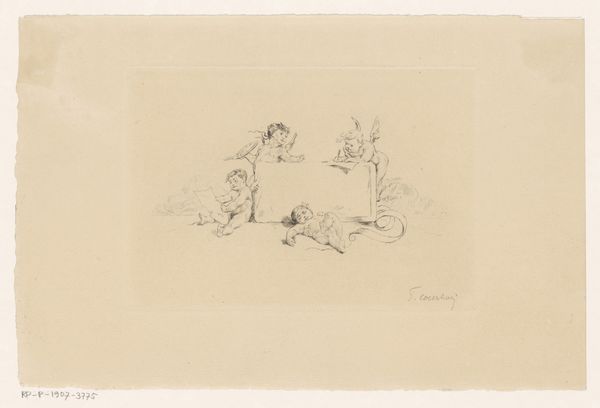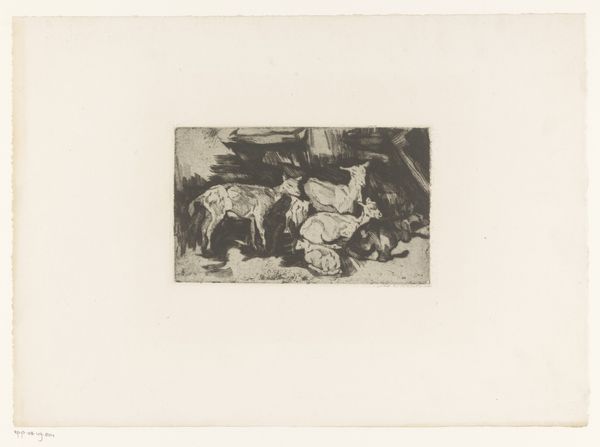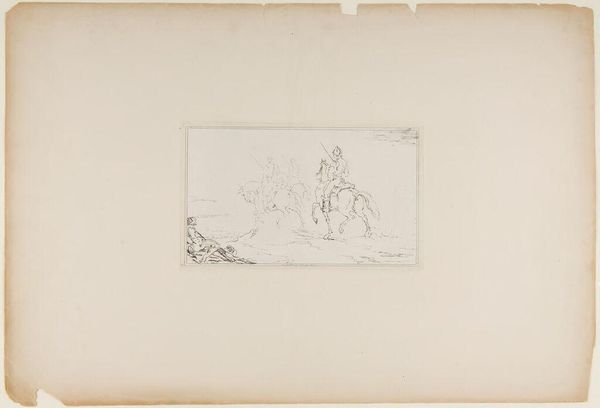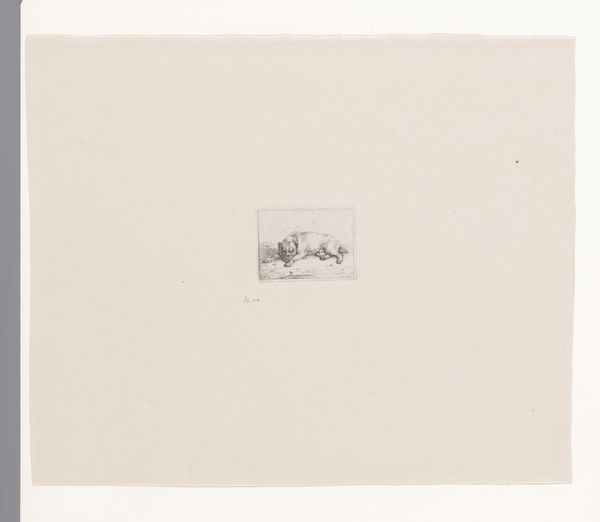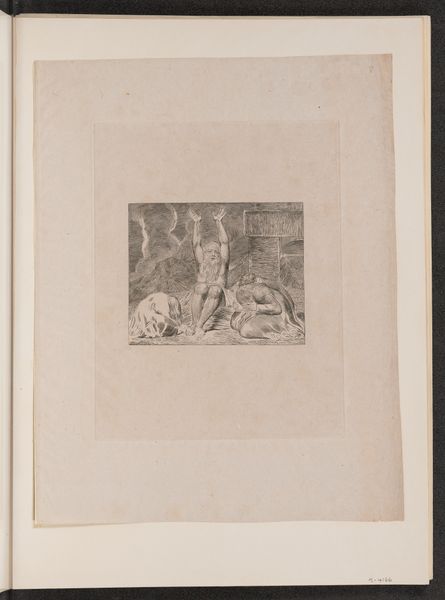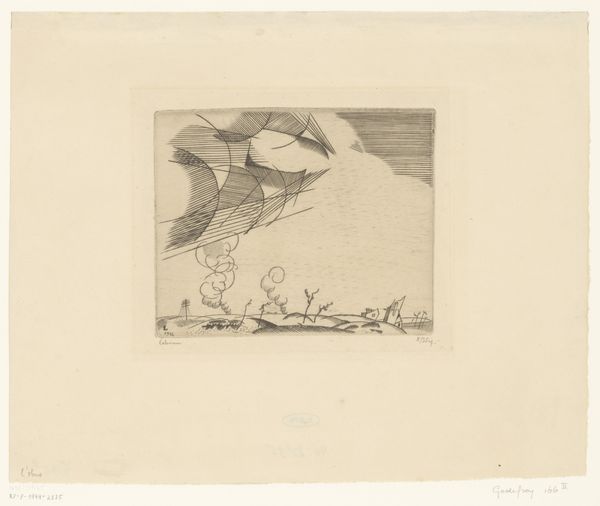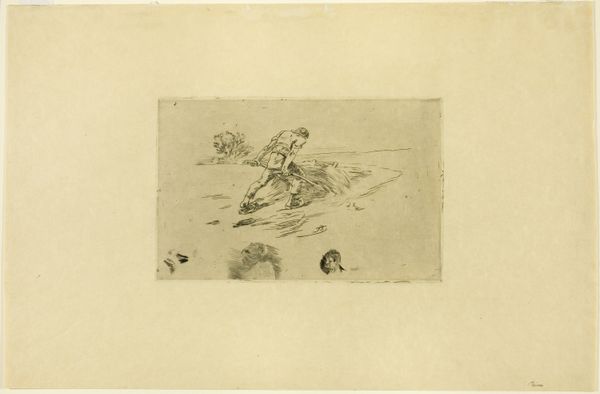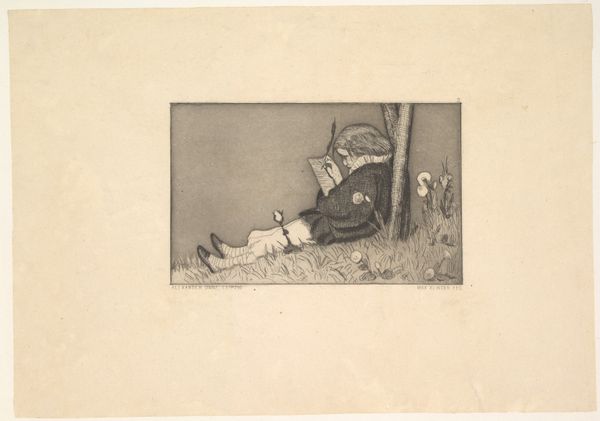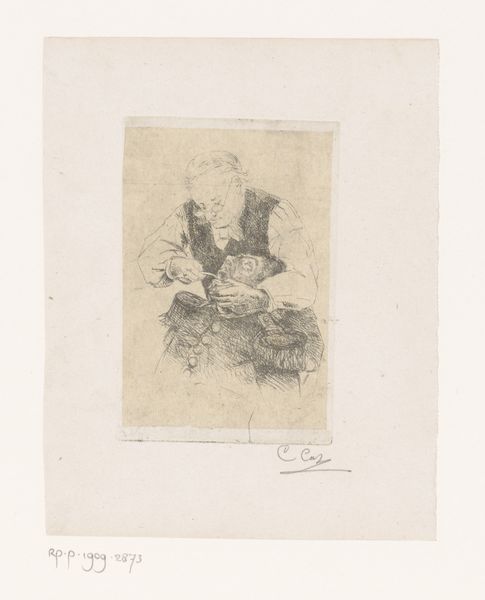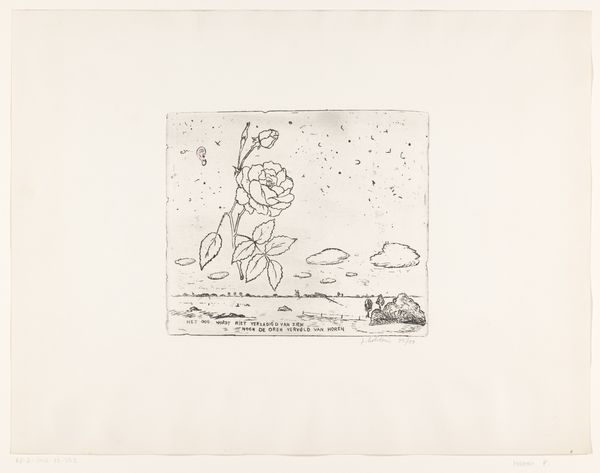
Triumph from Ein Handschuh (A Glove). Cyclus von zehn Compositionen radirt. Rad. Opus VI, Plate V. First edition 1881
0:00
0:00
drawing, print, etching, paper, engraving
#
drawing
#
aged paper
#
toned paper
#
allegory
# print
#
etching
#
paper
#
line
#
symbolism
#
engraving
Dimensions: Overall: 18 5/16 x 26 in. (46.5 x 66 cm)
Copyright: Public Domain
Max Klinger created this etching, "Triumph," around 1881 as part of his series "A Glove." The series is a Freudian exploration of fetishism and male desire. The glove here is elevated to an object of veneration, a sphinx-like monument carried in triumph above a crowd of obscured figures. The series was made in Germany during a period of rapid industrialization and social change. Klinger was part of the Symbolist movement that rejected realism in favor of subjective and dreamlike imagery. His focus on the psychological aspects of modern life critiqued academic art. To fully understand Klinger's work, it’s important to look at his other prints, as well as his writings on art and his position within the broader artistic and intellectual currents of his time. By examining such cultural and institutional contexts, we can better understand the social meaning of artworks like "Triumph."
Comments
No comments
Be the first to comment and join the conversation on the ultimate creative platform.

